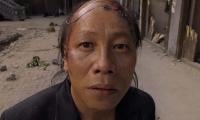Limits we should know
How representative are our legislative assemblies? This crucial question about our democratic system is rarely contemplated as part and parcel of the future of representative democracy in Pakistan. This is why a recent discussion on the subject between parliamentarians and civil society organised by the Free and Fair Election Network (Fafen) is an important one to get the conversation on delimitation of electoral constituencies going. The current paradigm to decide delimitation for a National Assembly seat is determined by the size of population and the number of NA seats allotted. Then, the Election Commission officials sit down to determine the exact boundaries of constituencies. The result is sometimes beyond ridiculous. There are constituencies that are bigger than entire provinces, such as NA-271 which covers Kharan and Panjgur. The constituency is spread over 65,000 square kilometres. Electoral hopefuls from the region must travel over 5,000 kilometres to meet a sizeable number of constituents. The constituency-size problem is one that is mostly faced by Balochistan, which covers around half of the territory in the country but retains only five percent of elected seats in the National Assembly. Often two constituencies in the same province have non-comparable population sizes. For example, the Battagram constituency has around 430,000 constituents while the Lower Dir constituency has around one million constituents.
The conclusion is simple: population size cannot be the only criterion to demarcate the boundaries of a constituency. There should be a limitation on the size of constituencies. But this is not possible without the question of delimitation getting tangled into another important question: how much representation each province is given in the National Assembly. In order for the spread of the constituencies in Balochistan to be reduced, the only way is to give the province a larger number of seats. Similar problems are faced in Khyber Pakhtunkhwa, where the hilly terrain makes it difficult for representatives to meet the people they are representing. Huge constituencies create two problems: unequal development spending and the inability to incorporate the voice of many citizens in legislative debates. The question of the number of seats allotted to each province is set to be revisited once the 2016 census concludes. But saying that the issue cannot be resolved until the next census is to say nothing. Much can be done by the ECP itself if it becomes more attentive to these problems. Delimiting constituencies is essentially a political act where the boundaries drawn often determine the outcome of the election. More supporters of one party can be included as well as excluded through the act of delimitation which is why political parties tend to be very sensitive about the issue. Delimitation in Karachi for the May 2013 election became a serious issue before the last general election. This is an important discussion that must now be brought into the legislature if the democratic process is to be made more representative.
-
 Queens Mother Arrested After Abducting Child From Court-ordered Visit
Queens Mother Arrested After Abducting Child From Court-ordered Visit -
 Sarah Ferguson Ready To ‘spread Her Wings’ After Separating From ‘disgraced’ Andrew
Sarah Ferguson Ready To ‘spread Her Wings’ After Separating From ‘disgraced’ Andrew -
 Finn Wolfhard Shares How Industry Views Him Post 'Stranger Things'
Finn Wolfhard Shares How Industry Views Him Post 'Stranger Things' -
 Dylan O'Brien Gets Nostalgic After Reunion With Old Friend
Dylan O'Brien Gets Nostalgic After Reunion With Old Friend -
 UK Doctors Warn Screen Time Is Harming Children’s Health
UK Doctors Warn Screen Time Is Harming Children’s Health -
 Meghan Markle To Get Police Protection In UK If Travelling With Archie, Lilibet
Meghan Markle To Get Police Protection In UK If Travelling With Archie, Lilibet -
 Spencer Pratt Expresses Hope For Taylor Swift, Travis Kelce's Wedding Invite
Spencer Pratt Expresses Hope For Taylor Swift, Travis Kelce's Wedding Invite -
 Evan Peters Makes Unexpected Confession About 'American Horror Story' Season 13
Evan Peters Makes Unexpected Confession About 'American Horror Story' Season 13 -
 Kentucky Grandmother Arrested After Toddlers With Broken Skulls, Ribs
Kentucky Grandmother Arrested After Toddlers With Broken Skulls, Ribs -
 European Space Agency Hit By Cyberattack, Hundreds Of GBs Data Leaked
European Space Agency Hit By Cyberattack, Hundreds Of GBs Data Leaked -
 Elon Musk’s XAI Launches World’s First Gigawatt AI Supercluster To Rival OpenAI And Anthropic
Elon Musk’s XAI Launches World’s First Gigawatt AI Supercluster To Rival OpenAI And Anthropic -
 Google Adds On-device AI Scam Detection To Chrome
Google Adds On-device AI Scam Detection To Chrome -
 First Ocean Robot Launched To Monitor 'Category 5' Hurricanes
First Ocean Robot Launched To Monitor 'Category 5' Hurricanes -
 Gwyneth Paltrow Gets Honest About Filming Intimate Scenes With Timothee Chalamet
Gwyneth Paltrow Gets Honest About Filming Intimate Scenes With Timothee Chalamet -
 Duke's Peace Talks With King Charles, Prince William: 'Ball Is In Harry's Court'
Duke's Peace Talks With King Charles, Prince William: 'Ball Is In Harry's Court' -
 New Research Finds Back Pain May Disrupt Men’s Sleep Quality Later In Life
New Research Finds Back Pain May Disrupt Men’s Sleep Quality Later In Life



